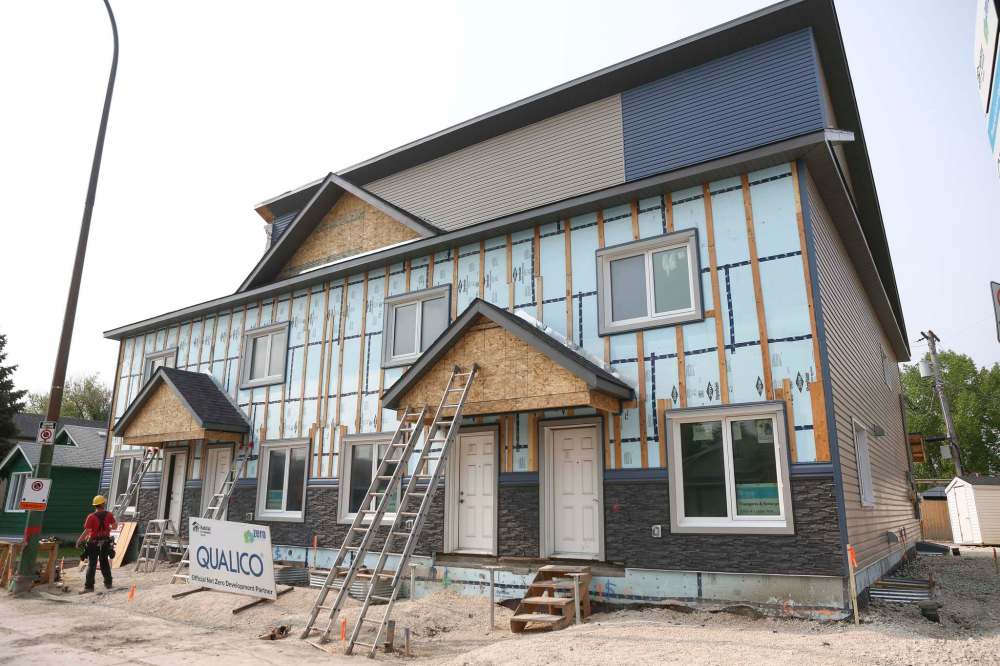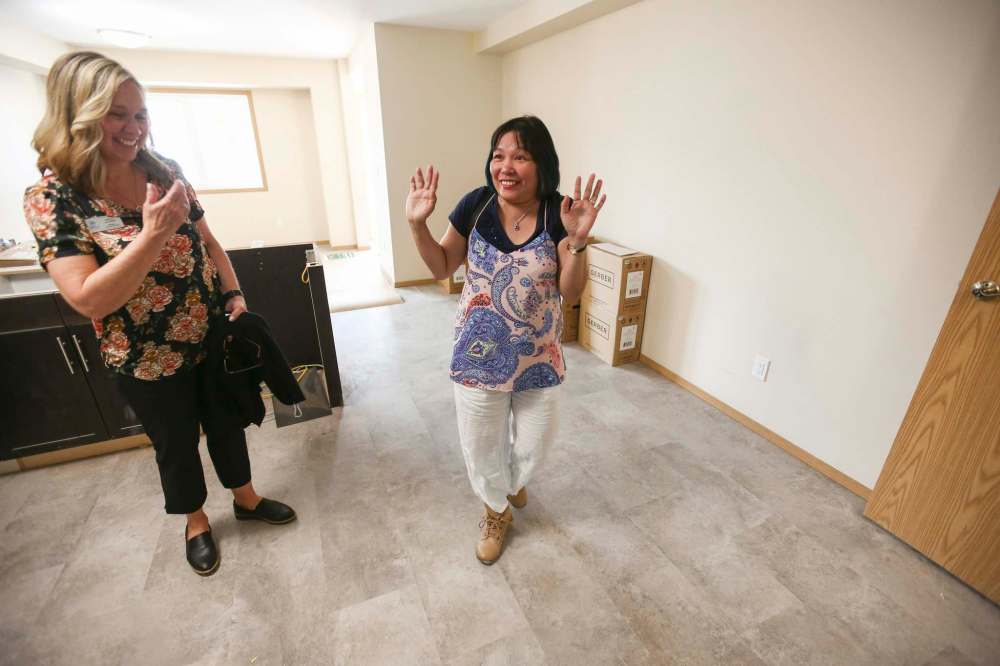Habitat finishes solar-heated, energy-stingy homes
Advertisement
Read this article for free:
or
Already have an account? Log in here »
To continue reading, please subscribe:
Monthly Digital Subscription
$0 for the first 4 weeks*
- Enjoy unlimited reading on winnipegfreepress.com
- Read the E-Edition, our digital replica newspaper
- Access News Break, our award-winning app
- Play interactive puzzles
*No charge for 4 weeks then price increases to the regular rate of $19.00 plus GST every four weeks. Offer available to new and qualified returning subscribers only. Cancel any time.
Monthly Digital Subscription
$4.75/week*
- Enjoy unlimited reading on winnipegfreepress.com
- Read the E-Edition, our digital replica newspaper
- Access News Break, our award-winning app
- Play interactive puzzles
*Billed as $19 plus GST every four weeks. Cancel any time.
To continue reading, please subscribe:
Add Free Press access to your Brandon Sun subscription for only an additional
$1 for the first 4 weeks*
*Your next subscription payment will increase by $1.00 and you will be charged $16.99 plus GST for four weeks. After four weeks, your payment will increase to $23.99 plus GST every four weeks.
Read unlimited articles for free today:
or
Already have an account? Log in here »
Hey there, time traveller!
This article was published 30/05/2019 (2356 days ago), so information in it may no longer be current.
When she steps into her house, Merlyn Laudato’s jaw drops.
“Oh my gosh,” she says, eyes wide as she sees her finished Habitat for Humanity build for the first time Thursday. “This is mine?”
The 54-year-old single mother and her two sons are one of five partner families who will soon move into the non-profit’s first net-zero buildings in Manitoba.

The two Logan Avenue structures — the four-unit townhouse where Laudato’s family will live, and a nearby single-family house — will produce at least as much energy as they consume through improved air tightness, increased insulation and solar panels installed on the roofs.
In essence, the houses will act like big coolers, with thick, airtight walls, says Gio Robson, president of Prairie House Performance. The home-energy consulting firm, along with Qualico and Sycamore Energy, partnered with Habitat for Humanity on the two-year project.
“It’s like putting on five parkas on a cold winter day,” says Robson. “So all of the heat that we produce via a conventional heating system like a furnace doesn’t just leak out.”
Each of the new units has 30 solar panels installed, producing 9.6 kilowatts of solar energy per hour, says Jason Miller, who designed the net-zero homes. The panels will end up saving about 12,680 kilowatt hours every year, he says — which is where the money comes in.
First, the solar energy comes inside to power the houses. Then, whatever energy they don’t use gets sent back to Manitoba Hydro’s grids, for which families will get credit on their utility bills in return, Miller says.
This means while the houses may not produce enough energy to be self-sufficient in the winter, when there’s less sunlight, the families will be able to use these banked credits to keep a balance of zero on their hydro bills year-round, he says.
The net-zero features added about nine months and $50,000 per unit to the project, and — though Miller says that number will be lower once solar energy rebates from Manitoba Hydro come through — it’s something Habitat for Humanity is considering expanding in the future.
For Laudato’s family, who will be moving in about three weeks, the new house couldn’t have come at a better time. Last year, her marriage broke up and she found herself in a tough financial situation. She started working longer hours at her job as a hairdresser — nine hour days, sometimes six days a week.
“Raising up two boys by myself, I really need to strive hard,” Laudato says.
Right now, she and her sons, Moses, 16, and Jacob, 12, live in a two-bedroom apartment in a block meant for seniors.

“It’s quiet,” Laudato says. “They don’t have freedom to play.”
But soon, they’ll all have their own spaces to roam around in — including a basement that, just one year ago, Laudato remembers digging as part of her sweat equity hours required for home ownership.
“Now I’m here,” she says, marvelling at the lower level’s smooth, finished floors and freshly painted walls where there was once just a hole in the ground. “I’m really right here.”
Laudato says the house’s net-zero features take it to a new level.
“I’m just really so blessed,” she says, stepping outside and looking up at the mid-morning sun that will soon power her new home.
“If there’s a cloud, there’s sunlight after,” Laudato says. “After the dark, there is always good things.”
caitlyn.gowriluk@freepress.mb.ca

